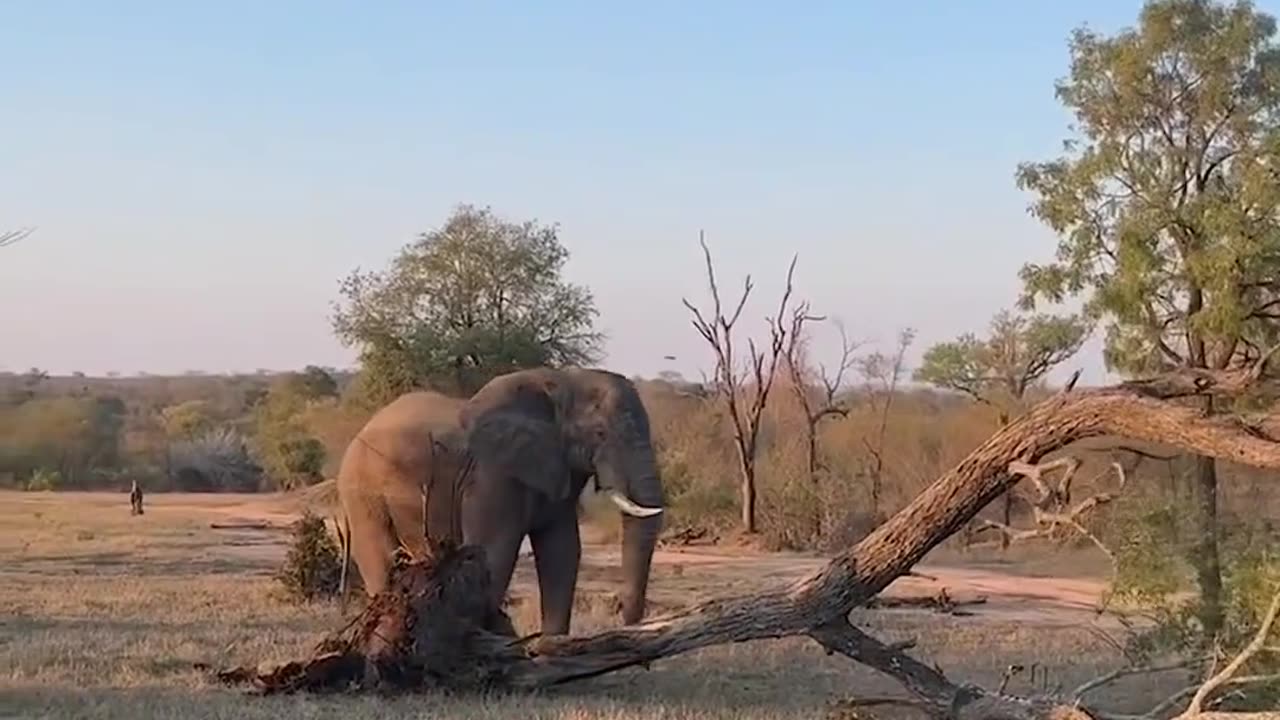Premium Only Content

Don't give them reason to be angry
Elephants are the largest living land animals, known for their massive bodies, long trunks, and large ears. They belong to the family Elephantidae and are divided into three species: the African bush elephant, the African forest elephant, and the Asian elephant. Here are some key facts about elephants:
Size and Weight: Elephants are truly impressive in size. The African bush elephant is the largest, weighing around 6,000 kilograms, while the Asian elephant weighs about 4,000 kilograms. The African forest elephant falls in between, weighing around 2,700 to 6,000 kilograms. They can reach a height of up to 3.2 meters for African bush elephants and 2.8 meters for Asian elephants.
Trunk and Tusks: One of the most distinctive features of elephants is their long trunk. It is a versatile appendage that they use for various tasks, including breathing, drinking, grabbing objects, and communication. Both male and female African elephants have tusks, which are elongated incisor teeth. Asian elephants may have tusks, but they are smaller and sometimes absent in females.
Social Behavior: Elephants are highly social animals, living in complex family groups led by a matriarch. These groups, known as herds, consist of females and their offspring. Male elephants usually leave the herd when they reach maturity and may form bachelor groups or live solitary lives. Elephants communicate through vocalizations, body language, and infrasound, which is low-frequency sound that travels long distances.
Habitat and Diet: Elephants inhabit a range of habitats, including savannas, forests, and grasslands. They are herbivores and have a diet primarily composed of vegetation, including grasses, leaves, bark, and fruits. An adult elephant can consume up to 150 kilograms of food per day.
Conservation: Elephants face numerous threats, including habitat loss, poaching for ivory, and human-wildlife conflict. Conservation efforts are crucial to protect these magnificent creatures. Organizations and governments work together to establish protected areas, implement anti-poaching measures, and promote sustainable practices to ensure the survival of elephants for future generations.
Elephants play a vital role in ecosystems as ecosystem engineers. They create water holes, disperse seeds through their dung, and shape landscapes through their feeding and movement patterns. Their presence has a positive impact on biodiversity and helps maintain the balance of ecosystems.
-
 LIVE
LIVE
SavageJayGatsby
57 minutes agoSpicy Saturday with Mally! | Road to 100 | $300 Weekly Goal for Spicy Bites!
57 watching -
 LIVE
LIVE
Akademiks
6 hours agoRoc Nation & Meg Thee Stallion did a 7 HOUR Deposition with me. Drake Secret Kid Finally Revealed.
1,735 watching -
 LIVE
LIVE
Mally_Mouse
20 hours ago🌶️ 🥵Spicy BITE Saturday!! 🥵🌶️- Let's Play: Tower Unite!
123 watching -
 24:19
24:19
Stephen Gardner
2 hours ago🚨BREAKING: FBI Raid of John Bolton’s House Reveals THIS!
20.3K44 -
 8:31
8:31
MattMorseTV
4 hours ago $0.73 earnedTexas just did the IMPOSSIBLE.
22.1K54 -
 24:39
24:39
MYLUNCHBREAK CHANNEL PAGE
1 day agoInterdimensional Beings at Borobudur
29.4K17 -
 12:42
12:42
Scammer Payback
22 hours agoCalling Scammers who were Raided
9.46K10 -
 23:31
23:31
IsaacButterfield
14 hours ago $0.02 earnedThe Woke Mob Is Really CANCELLING Matt Rife For THIS…
9.83K10 -
 1:23
1:23
WildCreatures
8 days ago $0.94 earnedThis mother armadillo eating her palm nuts is truly adorable
10K14 -
 8:59
8:59
The Art of Improvement
10 hours ago $0.01 earnedHow to Build the Most Powerful Mindset for Success
9.9K2